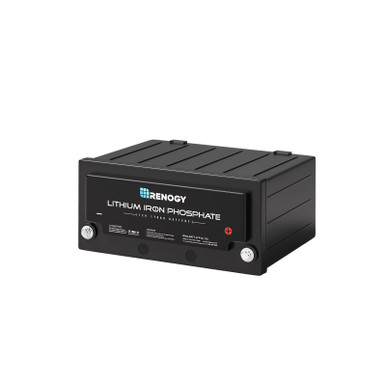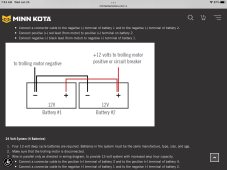EXACTLY!
Are you even sure they are fully charged before the capacity test?
I would try charging one battery up to only 14 volts, holding it there for an hour, letting it rest disconnected from everything for an hour, and then rerunning the capacity test.
Hello
as far as I know they are/where fully charged to capacity ,
as I have them at home and not in the Rv solar system ,all I have available is a couple lifepo4 chargers that charge at 14.6 volt
my 2 tests I did ,
test one
first was charge the battery with the charger , I had a Drok amp/ volt meter on the negative side , used the charger , waited till the charger red green light , Volt and meter said 0 volts and zero amps going into the battery
then the battery was rested for over a hour
then I used a inverter to draw about a 20 amp draw till the inverter or bms shut off
in all cases the battery bms disconnected before the inverter
the Drok meter showed me the kw/h the battery produced
i then reset the Drok meter and charged the battery with the life po4 charger that’s chargers at 14.6 volts turned off and zero volts and amps where going into the battery
I used a couple different manufacture chargers just in case it was a charger issue
test two
this time I use a brand new Renogy capacity meter that I tested seemed be accurate , but this meter gives the info in watts and amp hours , not much problem as renogy lists the watt hours and amphr rating
i charge the battery up like about , but this time I use a different tester
it’s the little capacity tester will prowse shows on few videos he has
this little tester I draw a load of 10 amps , it’s max is around 14 and I don’t want to burn it out right away
anyhow , I do the test till the bms shuts down , the tester also has a volt limit set at 10 volts , so I don’t top the battery down to far
well the bms cuts the test off at about 11 volts
i then reset the meter and recharge the battery and note the amount of power that goes back in , like before as soon and the charger stops and zero amps and zero volts going into the battery , I say it’s fully charged as much as I can get it
I compare both test one and two and the discharge capacity
they both show just about within 2-3 percent the same capacity for each battery
is my way of testing accurate , I don’t know , the two gave the same results
one thing I did notice was the bms for each battery would cut out at about 11volts and when charging once the battery got to 14.6 the bms would cut off charging , at least the one battery I was present for when it finished charging
which is weird why just cut the charge it didn’t taper the amps at all ,
the 100 amphr Renogy battery I have would taper the amp once it reached 14.6 volts
the same charger and meter were used on the 170 amp battery and the 100 amp battery with 2 results , one tapered the charge at the end the other didn’t
oh sorry , I did leave the charger on the battery for 1/2 hr to hour or more after fully charging them , but they never took any more charge , they basically said that’s it no more charge
let me know what you think
thanks





